






























PRESIDENT
Kim Burton Brackett (Kimberly) 208-308-1952
PRESIDENT-ELECT
Jerry Wroten (Wilder) 208-831-7339
VICE PRESIDENT
Spencer Black (Almo) 208-647-8130
PAST PRESIDENT
Mark Pratt ...........(Blackfoot) 208-681-6597
TREASURER
Cody Hendrix (Rigby) 208-360-9693
FEEDER COUNCIL CHAIR
Shawna Gill (Grandview) 208-850-9076
PUREBRED COUNCIL CHAIR
Val Carter (Pingree) 208-390-4811
COW-CALF COUNCIL CHAIR
Brayden Eliason (Holbrook) 208-705-2541
CATTLEWOMEN COUNCIL CHAIR
Maggie Malson (Parma) 208-739-2265
DISTRICT 1 REPRESENTATIVES
Eric Wittman (Lapwai) 208-790-5344
Casey Scott...............(Clarkston) 208-431-3024
DISTRICT 2 REPRESENTATIVES
Lori Ireland (Mountain Home) 208-866-0112
Royce Schwenkfelder (Cambridge) 208-550-2200
DISTRICT 3 REPRESENTATIVES
Eugene Matthews (Oakley) 208-431-3260
Jesse Human (Jerome) 208-358-1277
DISTRICT 4 REPRESENTATIVES
Ryan Steele (Idaho Falls) 208-390-5765
Chris Kirby (Salmon) 208-223-2258
DISTRICT 5 REPRESENTATIVES
Roscoe Lake (Blackfoot) 208-604-3650
Arnold Callison (Blackfoot) 208-681-8441
ALLIED INDUSTRY REPRESENTATIVE
Kody Dee Williams.....(Fruitland) 509-948-6430
DIRECTORS AT LARGE
Robert Oxarango (Emmett) 208-431-0777
Adrian Meyer (Grand View) 208-509-1892
CATTLEWOMEN BOARD REPRESENTATIVE
Tay Brackett (Filer) 208-866-4967
EXECUTIVE VICE PRESIDENT
Cameron Mulrony cameron@idahocattle.org
NATURAL RESOURCES POLICY DIRECTOR
Karen Williams karen@idahocattle.org
ADMINISTRATIVE ASSISTANT
Michelle Johnson michelle@idahocattle.org
DIR. OF MEMBERSHIP & INDUSTRY ENGAGEMENT
Morgan Lutgen morgan@idahocattle.org
Contact Idaho Cattle Association:
Mailing address: P.O. Box 15397, Boise, ID 83715
Location: 2120 Airport Way, Boise, ID 83705
Phone: 208-343-1615
For advertising sales, contact: idahocattlepublications@gmail.com
The Line Rider is the official publication of the Idaho Cattle Association. It is published 10 times each year, in January, February, March, April/May, June, July/August, September, October, November and December.

Gallagher helps make each generation better than the last. Genetics are essential to the performance of your animals from year to year. The right information makes all the difference when important decisions need to be made. Gallagher’s Animal Performance App, Weigh Scales, EID Tag Readers, Loadbars, and Electric Fencing products give you the best tools and information to help your animals thrive. Because at Gallagher, we know the best is yet to come.

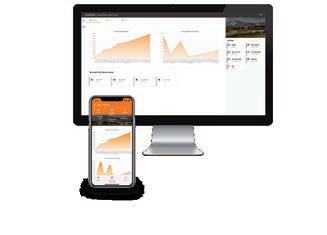

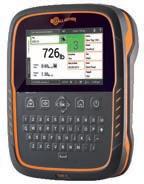
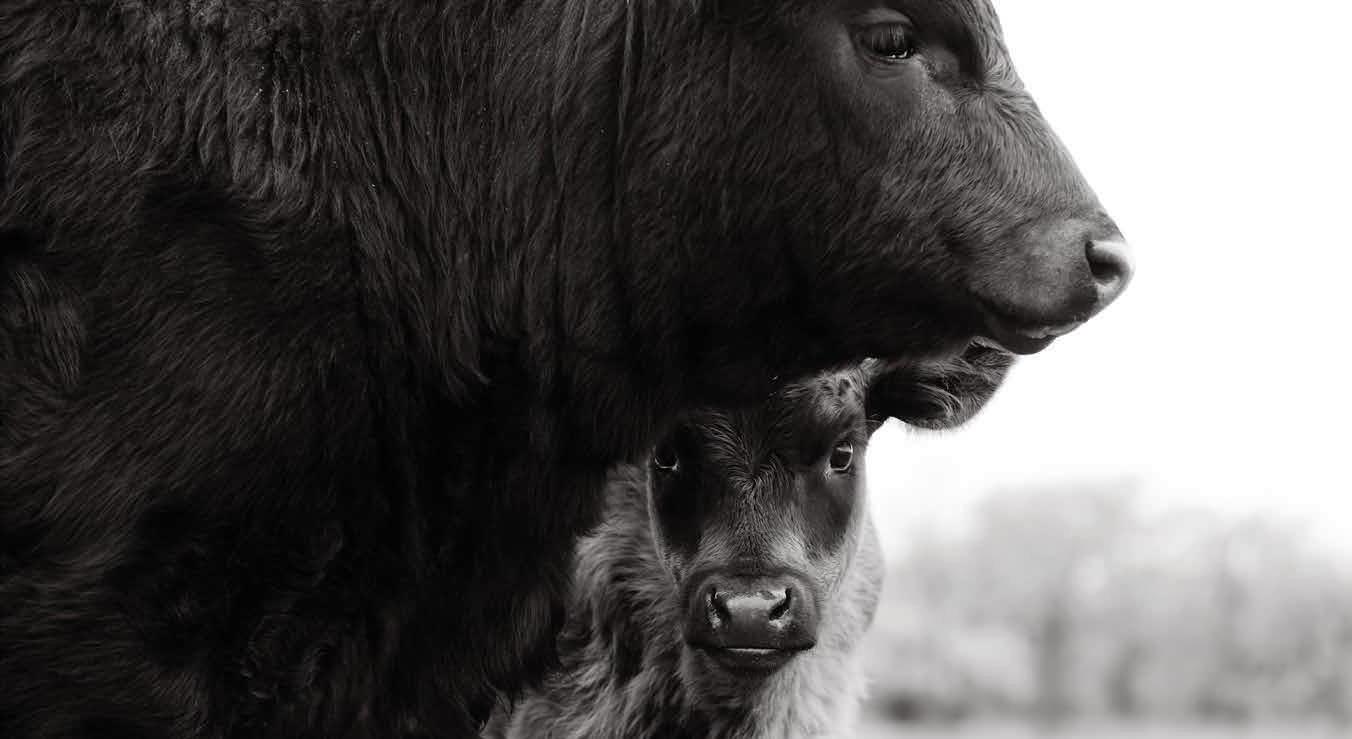
Membership is the lifeblood of our association! Growing our membership is critical as we work toward our mission of advancing the economic well-being of the beef industry. For this piece, I wanted to address some of the more common reasons we may hear from people as to why they have not become a member. Here are a few of the objections that may stop people from joining the Idaho Cattle Association (ICA):
1. “I can’t afford to pay membership dues.”
We are living in a world where fast food employees are making $15/hour and the teenager at my local grocery store gathers and disinfects grocery carts for $22/hour. Base cow-calf membership dues are $150 annually. That breaks down to $2.88/week or .41cents/day. Do you find value in the work ICA does at the state legislature or with state agencies? Value in the networking opportunity that ICA meetings and conventions provide? Value in the level of professionalism, experience and dedication of our ICA staff? If you answered yes, $2.88/week is a bargain.
2. “ICA is controlled by larger producers; my operation is too small.”
The average herd size in the United States is 44 head, so no operation is too small to step up and join their state cattle association. I argue that ICA is not run by the large producers in Idaho, it’s run by those producers who choose to be involved and show up at the meetings. Our association doesn’t care how many cows you run. What we care about is your engagement and dedication to our industry. Are you interested in promoting, protecting and preserving Idaho’s cattle industry? If so, then we have a seat at the table for you.
3. “ICA only works on federal lands issues.”
ICA does work on federal lands issues because nearly 62% of our state is owned by the federal government. ICA also works on state lands priorities; over 5% of Idaho lands are Endowment Lands. Looking at ICA’s 2023 priority issues our highest tier includes: Recreation, Idaho Brand Department, BLM Grazing Regulations, Cli-
BY KIM BURTON BRACKETT ICA President
mate Change, Sage Grouse, and Idaho’s Fish & Game Department. Only one of those priorities is specific to federal lands. Other priorities that ICA works on include Wolves, Water Rights and Wildfires & Fuels Management. Most of ICA’s work is geared toward all of Idaho’s beef producers, not only BLM or USFS permittees.
A great example of how the support is shared among all types of producers is the work ICA has done with endangered species. ICA is a national leader in working to manage sage grouse and wolf issues. The Endangered Species Act concerns all of us, whether we run cattle on federal, state or private lands. If you attended ICA’s Annual Convention, you heard from several presenters on how the work we do on our ranches and rangelands can mitigate climate change. This is another topic that crosses the boundaries between private, federal and state lands.
4. “ICA will do the work whether I pay my dues or not.”
True. ICA will carry on the good fight with or without your membership, as they have done for over 100 years now. But I don’t know many cattle producers who are looking for a free lunch. In general, we pay our own way and are proud to do so. The work that ICA engages in is brought forward by our members, either through the resolution process which determines our association’s policies or through local concerns brought to us by our members. When a local issue pops up and ICA’s influence is called upon to help address it, the first thing we do is make sure that we are working on behalf of a dues-paying member. If so, we roll up our sleeves and dive in. If not, we explain that we reserve our staff and leadership’s time for concerns that are impacting our membership. Do any of these sound like something you’d hear from yourself or other producers? If one of these objection solutions hit home with you, it’s time to join ICA and work with us to promote and protect Idaho’s beef industry.
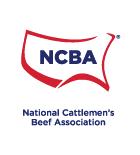



Time marches on, and it is rolling through the month of March as you settle in to read this column. Food security and safety continue to be items of discussion in areas around the nation and around the state house here in Idaho, among other topics.

With the thick of bull sale season in February and throughout March, this is a great time to visit with a representative on the ICA Board of Directors or staff member in your part of the world.
Communicating the message is key. We need to be clear and concise, and this is hard for our board and staff to communicate with leaders in the state if we too are receiving a mixed message from the industry. The ICA works to be effective in our lobby and our messaging. We work with other groups within Agriculture, and when we send a clear, concise, and unified message it is easily heard by those whom have the ability to hear.
Now, it seems in two short paragraphs, I have jumped from one end of the spectrum to the other. I only point this out to drive home this message: we as an industry need to communicate with each other. That is not a new statement, as I have often echoed this sentiment in my other “ramblings” as well. Why do I again bring this to your attention? I have observed the changes in our state house this session, including the large number of freshman legislators- those folks very well could be the best person for the job in Boise. They were the individuals elected by their constituents; however, watching your neighbor run a cattle operation is much different than having to do the work as a producer.
The work of communicating our needs as an industry will come from each of you reading this, your neighbors in the industry, our partners in the allied industries and others in agriculture. The message regardless of the messenger needs to continue to be unified when it gets to the halls of the statehouse or the chambers of congress.
As members of the association, ask your friends, neighbors, in-laws, and outlaws to be joiners. It looks like as we travel and attend events the numbers at our events are consistent and even growing slightly. However, our population is increasing at a much faster rate than our involvement level and this is why I encourage you to ask people to be joiners, join the PTA, the rotary club, the community group, the 4-H the FFA, the ICA, the NCBA, hell join a band if you want to, but be a joiner. If you choose not to join, the only influence you have on change is the influence of changing the channel on your television.
March is membership month, we need to increase our membership; our involvement, our voice. I attended a meeting which discussed this very topic and one of the takeaways was that I keep going back to is that its much easier to increase communication and membership when you have a problem to unify the membership and industry. Well that seems to me like an oxymoron. If I do my job well, I am hoping we avoid the big issues that we have to rally behind, but can instead focus on multiple more moderate issues. So this is why I look for joiners. Lets communicate among our industry the importance of a large unified message, and if you choose to not participate in the conversations, the only change you can make is on the ol’ boob tube at home. Be a joiner, be a member, be a leader, be a cowboy, be a legend, just be cool.
As members of the association, ask your friends, neighbors, in-laws, and outlaws to be joiners.
Collaboration & communication come together for a unified message to support our industry


In an effort to keep our ears close to the ground on issues that are impacting Idaho’s cattlemen, we have recently beefed up our ICA committee structure. With a two-fold purpose of providing greater opportunities for member engagement at the local level which in turn informs and guides our efforts, the new committee structure will provide sharper focus for ICA on the issues that are impacting our industry.
DIRECTOR BY KAREN WILLIAMS ICA Natural Resources Policy Directoryear is for each of the committees to meet via Zoom or conference call at least three times a year: once during the state legislative session, once prior to our summer conference, and once in the fall to gear up for the resolutions process at our annual convention.
The Federal and State Lands Committee and Wildlife Committee meetings were held recently while the remaining committee meetings have been scheduled. So that you can be in the loop on our discussions and aware of current hot topics, below is a breakdown of the issues discussed within each of those committees.
• BLM Grazing Regulations – BLM continues to work internally on revisions to the grazing regulations and we continue to wait. We have been told they will likely be released for public review and comment this summer.
ICA’s policies are managed under five standing committees and 4 councils, each of which is guided by a chairman. The committees are:
Cattle Health and Well Being : Scott Holt, Chairman
Federal and State Lands : Darcy Helmick, Chairman
Marketing : John Nalivka, Chairman
Private Lands & Environment : Norm Wallis, Chairman
Wildlife : Richard Savage, Chairman
The four councils are:
Cattlewomen : Maggie Malson, Chairman
Cow/Calf : Brayden Eliason, Chairman
Feeder : Shawna Gill, Chairman

Purebred : Val Carter, Chairman
Under our updated structure, each committee has at least one representative from each of ICA’s five districts that cover the state. Our goal for the
• Sage Grouse Plan – Like the grazing regulations, we are also playing the waiting game with expected revisions to the BLM sage grouse plans. BLM is working on the draft Environmental Impact Statement (EIS) now. It will also likely be released for public review this summer. We are hearing that there will likely be one range wide EIS, containing provisions from the previously released and frequently litigated 2015 and 2019 plans, with several state specific EISs under it. Also in the sage grouse realm, the University of Idaho is wrapping up its 10-year spring grazing and sage grouse study. They will be collecting data through July and plan to publish results in 2024.
CONTINUED, PAGE 12
Learn more about the focus of committees, as well as updates & results from recent meetings
If you are interested in the work and issues associated with any of these committees, we would gladly welcome your participation.

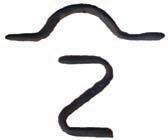

• Fence Law – In an effort to protect Idaho’s open range law, Senator Harris is working on preemptive measures that would involve updates to fence laws. In a nutshell, the amendments establish that if a fence is on ground or in disrepair, the landowner has 10 days after notification from the county sheriff or a $150 fine is imposed. Committee members expressed several questions and concerns including whose responsibility the fence is when federal lands border a county road or state highway.
• Rangeland Improvement Act – During his previous term, Representative Raymond drafted legislation to create a program similar to Utah’s successful Grazing Improvement Program in which funds are leveraged to help with range management projects. After coordinating with ICA, the plan is to sit on the legislation this year as we work to improve language and educate legislators and others about it, with a goal of introducing it next year.
• Renewable Energy Projects – Several issues were discussed related to the increased push for renewable energy projects on federal lands. The Lava Ridge Wind project in the Magic Valley is out for public review now with a comment deadline of March 21. ICA continues to express concerns related to disruptions to livestock grazing allotments within the project. Additionally, the comment period on the western-wide BLM programmatic EIS for utility-scale solar energy planning just closed and ICA expressed our grave concerns with solar development on public lands where grazing occurs.
• Farm Bill – 2023 brings the five-year renewal of the Farm Bill and ICA has been asked by members of our congressional delegation to weigh in on Farm Bill issues that impact us along with the opportunity to provide suggestions for improvements to the bill. Committee members expressed questions and concerns regarding how “climate smart” type projects would be incorporated into the update of the bill.
WOLVES
• Status of species, litigation & listing decision
• The U.S. Fish and Wildlife Service (FWS) is not moving on the 12-month status review even though 12 months is long past.
• There has been no movement on the litigation against the new state law regarding wolf trapping in grizzly and lynx habitat.
• Wolf harvest was down in 2021 with 100 less wolves taken than the previous year.
• Livestock depredation reporting for the same timeframe was down 40%, but Wildlife Services killed more wolves
in chronic livestock depredation areas last year which speaks to the success of the state law ICA worked to get approved in 2021.
• The Wolf Depredation Control Board has been able to authorize more collaring.
• Updates to state wolf management plan – Idaho Department of Fish and Game (IDFG) has released updates to the state wolf management plan that will increase the population goal from 150 to 500 to keep in line with the delisting decision.
• Potential state legislation – There may be efforts introduced to direct more funding to wolf control efforts. ICA would prefer to hold off on any action until 12-month status review is finalized so as not to draw more attention to this issue and protect our delisted status.
• This winter, there has been over 2000 elk congregating near Hamer. Herds of similar size have also been congregating by Blackfoot and Weiser, and likely other areas. IDFG has worked with locally affected ranchers and is implementing a feeding plan trying to draw them back to the Wildlife Management Area (WMA), although the viability of this approach remains in question. In other areas, depredation tags may be sold.
• Elk calf crop is increasing each year due to these habits. Research has found that when elk winter at higher elevations, the calf crop is around 40%. Now that the herds are wintering at lower elevations, the crop is 60%.
• Committee members suggested that when depredation tags are made available, the landowner should not have to purchase the tag.
• IDFG should improve management of WMAs so that wildlife are attracted to them. As the WMAs currently are ungrazed, wildlife are not attracted to those areas which results in the opposite of the intended outcomes of WMAs. This may even mean growing crops in WMAs that would attract elk. Also IDFG, should create a grazing management plan for the WMAs.
• Committee members expressed concerns about the potential impact of congregating elk on Idaho’s brucellosis-free status.
• A string of happenings in February put the grizzly bear issue on the front burner again. Because FWS has not responded to delisting petitions, including one from the state of Idaho submitted last March, Governor Little filed a notice of intent to sue the Biden Administration for its failure to make a finding on the state’s petition within the timeframe required by law. Then, FWS announced that they are initiating a 12-month
status review on creating two separate Distinct Populations Segments (DPS) of the species in the Northern Continental Divide Ecosystem and the Greater Yellowstone Ecosystem.
• IDFG Director – IDFG Director Ed Schriever retired at the end of January. Committee members were encouraged to reach out to IDFG commissioners to express the need for a director who understands and respects the importance of Idaho’s cattle industry. ICA feels optimistic about the promotion of Deputy Director Jim Fredericks to be the new Director.
• USFWS State Supervisor – Idaho also has a new FWS state supervisor for Idaho. Lisa Ellis comes most recently from the Washington, D.C. office and began in Idaho in February.
• The Wildlife Committee also reviewed and shared opinions on issues discussed by the Federal and State Lands Committee including sage grouse, fence law, and the Farm Bill.

If you are interested in the work and issues associated with any of these committees, we would gladly welcome your participation and input. Please send an email to me at karen@idahocattle.org and I will add you to the list so that you get committee


Igrew up on our feedlot in Burley, but my opportunity to come back to our family operation came in the form of managing the ranch. My first year ranching felt like a “standoff” of sorts with higher powers. “They” were telling me that I should have stayed in my previous career, so things started out really well. The water was record setting- which even in a good year means we are 28 days away from a drought where I live. The feed was good and we were putting up record yields of hay. As the year progressed, the good feed source
 BY SPENCER BLACK ICA Vice President
BY SPENCER BLACK ICA Vice President
ary, we had “Snow-pocalypse”. Every day consisted of plowing snow, strawing cattle, and warming up cold calves. Then came the floods and finding places on the ranch dry enough to feed on. Around this time came, I recall receiving the notice that our Idaho Cattle Association (ICA) membership had expired. As I went back and forth mentally, as to whether or not to renew, I called a neighbor that has been a member for as long as I can remember. His response to me was, “We are stronger together than apart”. With this sentiment in mind, I decided to renew our membership.
turned dry in time due to lack of rain. Two weeks after we moved our herd to the upper allotment, we had a lightning strike ignite the Grape Creek fire, which had previously not caught fire for over a hundred years, making it very fitting that it happened my first year on the job. The private ground still had ample feed to get us through fall, so the cows coming home early did not affect us much. To follow that up, as my first calf hit the ground in Janu-
Year 2 on the job, the water supply was great, as was the feed, and hay production. The higher powers were giving me a break. Due to the fire, the cows came home early again because the ground had to be rested. The private ground once again produced enough feed to get us through the fall and into winter. Then came the notice from the forest about quaking aspen trees on our other grazing allotment. The higher powers had struck again. The original plan was to control burn sub-alpine firs to stimulate the growth of the quaking aspens, so we would need to hold cattle off of these areas. At the same time we had a mild winter, as well as a dry spring, and I knew we would not have enough grazing to make it to winter. In our grazing association meeting as we discussed what we should do, I suggested we call ICA. With the support of the other permittees I reached out to Magic Valley Cattlemen’s Association and they put me in contact with Cameron at ICA. He was quick to respond and within 2 days, he came to meet with me at our local fair, where we went over the maps together. He also met with other grazing allotments that were affected by this project. Karen was also in attendance as
A personal testimony on how I learned the value of my ICA membership and why I’ll never let it go.
As I went back and forth mentally, as to whether or not to renew, I called a neighbor that has been a member for as long as I can remember. His response to me was, “We are stronger together than apart”.
we met with the Forest Service and discussed solutions that would help them accomplish their goals without impacting us. It was clear to me that she knew the lingo and had their respect. In the end, the Forest Service came up with a plan to help quaking aspen populations that resulted in minimal impact to the permittees.
This is a long story to explain why my membership is so important to me and our operation, but it is also why when I was asked to serve on the board, I accepted the request. When I talk to other producers and bring up ICA, the response I get most often is “I just don’t have time”. Most days I don’t feel like I have time either, but I’m not asking producers for their time. What I’m asking for is support. Membership is support in numbers for the leadership, board members, committees, and staff. As laborers are hard to come by, every operation is strapped for time, but as issues arise there is no need to feel alone. Membership gives the benefit of over 800 members’ support to get through these issues.

I am grateful for the support I have from family, friends, neighbors, and ICA members to continue serving the industry that I not only grew up around, but also the industry that I love. If questions arise for you or from other producers about benefits of membership or other issues you’re facing, my number is listed in the front!



Often times when looking at the approach to various tasks inside my job role, the question I use as my “true north” is “Does this provide value to our members?” In reality, that’s a pretty ambiguous question, due to the fact that (many times) people see value in different ways. “Does it save me money?” “Is it worth my time?” or “What do I gain?” are just a few versions of the internal question that people may ask themselves when considering an investment or purchase – or even when signing on as a member of an association. Sound familiar?
WHILE ONE MAY NOT FIRST THINK HIGHLAND CATTLE MAKE UP A LARGE PART OF IDAHO’S BEEF INDUSTRY, THE TRUTH IS THAT NO BREED IS EXCLUDED FROM REPRESENTATION BY ICA AND ALL ARE PART OF IDAHO’S CATTLE INDUSTRY.

While you may know that membership is the most important column of our organizational structure, many may have had the common thought pass through their mind ‘What’s in it for me?’
A lot of people aren’t privy to the day to day happenings inside our offices in Boise – it’s not that we wouldn’t tell you about it, but a lot of it is, seemingly, minutia. From the outside looking in, we send a lot of mail, do some typing, talk on the phone and probably go to some meetings. All of which would be true, but I’d like to share through a slightly different lens as to how this relates back to what you gain from your membership in the Idaho Cattle Association.
Have you ever thought about what it may look like if you had to:
• take the time to read proposed policy (in a timely manner- legislation can move fast!),
• figure out what it meant,
• set an appointment with a legislator (or many!),

• visit and find your way around the statehouse,
• communicate an informed perspectiv e on said policy,
• attend committee meetings,

• read media communications around this policy impact,
• write any briefs,
• form relationships with supporters or opposition (depending on the policy) and then, after all of this,
• go back home and tend to your operation?
Multiply this single example by an exponential number of separate, yet also related, issues & proposals and you’ll soon have more than your share of work cut out for you! One life lesson I’ve gleaned over time is that YOUR time is valuable – I think we can all admit to saying ‘I’d rather pay ‘so and so’ x amount just so that I don’t
need to do it/learn how/be the expert’! Well, simply put, that’s what we do at ICA! In fact, as staff and leadership, we attended (literally) hundreds of meetings & events in one year’s time – all related to driving support of Idaho’s cattle industry. Whether it was collaborating with agencies, meetings at the Capitol, providing updates around the state to members or even just further forging relationships in support of our member’s goals, our staff & leadership work year-round so that we can be armed with the best information, the most current insight and have the strongest relationship in the room when it comes to Idaho beef.
And it doesn’t end there, folks! Every issue of Line Rider is cultivated to provide education & updates that are current and relevant. Every Executive Update is positioned to give you an outlook on what you could see happening in our state, what issue may be on the horizon or what major policy change happened while you were out gathering/calving/shipping the week before. Every annual event has months of planning put into it so that each detail from the general session to the breakouts provide the most beneficial content & networking. Every bull sale attended is not only to support a producer’s dream, but so that our leadership can have just one more opportunity to talk with you about the issues you’re facing.
We’ve recently been able to add a few more “tangible” benefits for members- benefits that maybe even help your bottom line. These new perks include complimentary access to Performance Livestock Analytics Cattle Krush mobile app, as well as the ability to receive a $0.06/gal fuel discount at Maverik stations. The Cattle Krush app is designed to be an advisory tool that can assist you with predicting & capturing profit opportunities. By integrating price of feeder calves, cost of gain and market price, you’ve got one more resource in the toolbox at your fingertips. And it’s no secret that we’ve all felt pain at the pump this past year. Maverik is now offering current members of ICA the invitation to set up a fleet fuel account and receive an automatic $0.06/ gal discount on fuel at their stores! Additionally, ICA will continue to mail Line Rider magazine to members, as well as offer advertising discounts to our members.

We aren’t magicians and aren’t going to be “everything to everyone”, but one thing to keep in mind is that our goal is to “Preserve, Promote, Protect” Idaho’s cattle industry.
Your membership with the Idaho Cattle Association provides many benefits, but one thing I haven’t yet spoken to, is the weight behind being part of an organization as large and respected as ICA. We aren’t magicians and aren’t going to be “everything to everyone”, but one thing to keep in mind is that our goal is to “Preserve, Promote, Protect” Idaho’s cattle industry. At times, this comes in the form of supporting your individual operation in the case of certain disputes. While we can’t promise to resolve an issue for you (or in your favor), one thing to keep in mind is that if you aren’t a member PRIOR to a dispute or legal challenge, ICA most likely won’t be allowed by our court system to lend our resources or aid if you aren’t a current member or become one just to get through legal proceedings. In this example, I’d encourage you to view ICA as an insurance policy – one that does the work you don’t like to do at the Capitol, and also one that can provide great value if the need arises.
In closing, if you see fit, I’d ask you to consider cutting out this article and sharing with a neighbor or other non member you may know. There’s room for all types of supporters! Are you an Ag teacher with no cattle? You can still be an industry supporter level member! Are you a veterinarian new to practice? You can be a local associate member! Extension agent with a large herd and dreams of a direct to consumer beef sales business? CowCalf member! Did you grow up on
a ranch, now work behind a desk but still love a good steak? Industry supporter!
Value comes in lots of package- I hope you’ll continue to see value in the Idaho Cattle Association and let us be your voice in support of Idaho’s beef cattle industry.
District 1: Diana Graning, Graning Ranch in Keuterville, ID (cow-calf)
“I feel the ICA is the ranchers best defense against policies that would negatively impact the beef industry.
I am a member of the ICA because of the positive agriculture influence they hold in our state capital and their efforts to protect the Idaho beef industry.”



District 2: Kent Mann, M&M Feedlot in Parma, ID (feeder)
“Our membership with ICA is important because it keeps us informed of what is happening, both in our State Legislature and also in the United States Congress. Without this information we might not be aware of what is happening before it is too late to respond. We value that ICA follows member direction and keeps the Idaho beef industry’s best interest front of mind.”
District 3: Doug Haynes, DL Evans in Burley, ID (Allied Industries)
“For us being a member of the ICA, we stay involved with what is going on in the cattle industry, not only in Idaho but nationally. It also
allows us to meet the wonderful people of the cattle industry. By being a member of the ICA, we can also see what is going on in the political realm of the industry. Most of all what the ICA represents and who it represents for our changing world.”

District 4: Mary Cerise, Cerise Ranch in Salmon, ID (cow-calf, direct to consumer sales)

“ICA is an integral part of helping us navigate the challenges we face as cattle producers in rural Idaho. The folks at ICA keep us up to date on information regarding legislation that affects us directly. We feel a strong sense of community by being involved with the ICA, knowing we’re not alone facing larger issues and having resources available to us through meetings and newsletters, as well as the website.”

District 5: Joe Daniels, 101 -D- Ranch in Malad, ID (cow-calf)
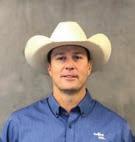
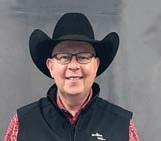

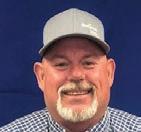
“I’ve been a member for as long as I can remember, even serving on the board of directors at one point. If you listen, they (ICA) will work to come up with solutions to all types of scenarios. While things have naturally changed over the years, its been for the good of the industry.”
BALANCED MINERAL

HIGH QUALITY
ROBUST PRODUCT
WEATHERPROOF
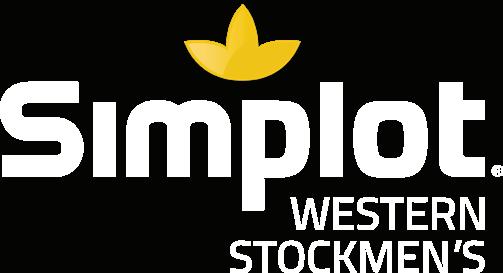
Join the U.S. Roundtable for Sustainable Beef (USRSB) at the Grove Hotel in Boise, ID, for the USRSB General Assembly Meeting! Attendees will tour sustainable operations, learn about the implementation of byproducts in the beef supply chain, hear from government officials and industry leaders and much more. The event will provide an overview of recent events across the beef supply chain, current efforts of our USRSB working groups and task forces and outline next steps as we move towards continuous improvement in beef sustainability. Attendees will have the opportunity to hear about new technologies and techniques that can be implemented at their operation to enhance their sustainability and boost their bottom line.
Cattle producers interested in attending the General Assembly Meeting can apply for the Rancher’s Resilience Grant, provided by National Cattlemen’s Foundation and Cargill Protein, to aid in the cost of attendance. Approved applicants with receive reimbursement for housing and registration costs. Applicants must apply for the grant 21 days before the event, no later than April 10, 2023.

Since the release of the first national sire summary in 1971, beef cattle producers have been using expected progeny differences (EPD) to assist them in making selection decisions. Expected progeny differences are estimates of the differences in performance of future progeny from two or more sires from the same breed. Expected progeny differences are generated from breed association data banks and are published/presented in sire summaries, beef sire catalogs, beef sire directories, bull sale flyers, and on websites. Expected progeny differences are specific to the breed from which they were generated and cannot be compared across breeds. This is due in part to the computations of EPD being done separately for each breed, the different base adjustments used by the breed associations, the differences in genetic trends for traits within the breeds, and the limited amount of information from comparisons of animals from different breeds.
A host of beef producers have benefitted from using EPD to select animals to meet defined or desired production goals. However, since EPD are specific to the breed from which they were generated and cannot be compared from one breed to another, commercial beef producers using crossbreeding have found challenges in using EPD. To address these challenges, the concept of across-breed adjustment factors was employed. For several years, researchers at the United States Department of Agriculture’s Meat Animal Research Center (USMARC) in Clay Center, Nebraska have evaluated breeds, collected data, and developed tables of adjustment factors that account for differences between breeds. These adjustment factors are updated annually and released through the Beef Improvement Federation (BIF) (https://beefimprovement.org).
Across-breed adjustment factors for beef cattle growth traits (birth weight, weaning weight, yearling weight) and maternal milk were first calculated and published in 1993. Carcass trait
(marbling score, ribeye area, fat thickness) adjustment factors have been available since 2009 and carcass weight adjustment factors were added to the mix in 2015. Growth trait and maternal milk adjustment factors are available for seventeen beef breeds and carcass trait adjustment factors are available for fourteen beef breeds. The most recent list of evaluated breeds and their across-breed adjustment factors are presented in Table 1. An example of how to use the adjustment factors to calculate an across-breed EPD follows.
To calculate an across-breed EPD, you need a current EPD from a breed association sire summary and a current acrossbreed adjustment factor for the same breed and trait. Consider a Hereford bull with a yearling weight EPD of +100.0 lbs. and a Gelbvieh bull with a yearling weight EPD of +100.0 lbs. The across-breed adjustment factors (presented in Table 1) for yearling weight are -41.8 lbs. for Hereford and -18.0 lbs. for Gelbvieh.
To calculate an across-breed yearling weight EPD for the Hereford and Gelbvieh bulls, simply add the adjustment factor to the bull’s original EPD. The across-breed yearling weight EPD is 100.0 lbs. + (-41.8) lbs. = 58.2 lbs. for the Hereford bull and 100.0 + (-18.0) lbs. = 82.0 lbs. for the Gelbvieh bull.
The expected difference in progeny yearling weights when both bulls are mated to cows of another breed would be about 24 pounds (82.0 lbs. - 58.2 lbs. = 23.8 lbs.). In other words, there is a fair amount of difference in what these bulls can provide in terms of yearling growth potential to their progeny. As producers switch between breeds and select bulls for their commercial/ crossbreeding programs, they often compare EPD values for economically important traits. Taken at face value, these bulls look identical for yearling weight growth. However, as previously mentioned, these bulls cannot be compared directly and their within-breed EPD must be adjusted to make a fair and accurate comparison. Once the adjustment is made, it is clear that the Hereford bull lacks (approximately 24 lbs. less) the yearling growth potential of the Gelbvieh bull. The expected yearling weight difference of progeny when both of these sires are mated to cows of another

breed would be 24 lbs. In other words, the progeny of the Hereford bull are expected to weigh, on average, 24 lbs. less at a year of age than the progeny of the Gelbvieh bull.
Another way to look at the situation stated above is to consider a Hereford bull with a yearling weight EPD of +100.0 lbs. and a Gelbvieh bull with a yearling weight EPD of +75.0 lbs. As mentioned previously and shown below (Table 1), the acrossbreed adjustment factors for yearling weight are -41.8 lbs. for Hereford and -18.0 lbs. for Gelbvieh. To calculate an acrossbreed yearling weight EPD for the Hereford and Gelbvieh bulls, simply add the adjustment factor to the bull’s original EPD. The across-breed yearling weight EPD is 100.0 lbs + (-41.8) lbs. = 58.2 lbs. for the Hereford bull and 75.0 + (-18.0) lbs = 57.0 lbs. for the Gelbvieh bull.
The expected difference in progeny yearling weights when both bulls are mated to cows of another breed would is small (58.2 lbs. - 57.0 lbs. = 1.2 lbs.). In other words, these two bulls would provide approximately the same level of yearling growth potential to their progeny. These calculations suggest that if a producer is currently using a Hereford bull with a yearling weight EPD of +100.0 lbs. in his crossbreeding program and wants to switch to a Gelbvieh bull, he would need to find a Gelbvieh bull
with a yearling weight EPD of +75.0 lbs. to maintain the same level of yearling weight growth genetics in his herd.
It is well known that traditional, within-breed EPD have associated accuracy values that range from zero (low accuracy; EPD likely to change) to one (high accuracy; EPD not likely to change). These accuracy values reflect the amount of data/information use in the EPD calculations and how much the EPD might change over time as more data/information is included in the calculations. While not listed specifically, accuracies for across-breed EPD are similar to the original within-breed EPD accuracies. The across-breed EPD accuracies contain a small amount of additional error that is associated with the estimation of the adjustment factors. Generally, the accuracy of the across-breed EPD can be gauged by taking into account the accuracies of the within-breed EPD.
Since the 1970’s, beef cattle producers have benefitted from using EPD to select animals to meet defined or desired production goals. However, there are some challenges producers encounter as they work to identify the best sires to use/rotate in commercial/crossbreeding programs. Across-breed EPD can assist producers as they seek to select sires to improve/optimize economically important traits in their herds.
Chanel Tewalt was appointed by Governor Brad Little to serve as Director of the Idaho State Department of Agri culture (ISDA) in January. Director Tewalt first joined the ISDA while in college and has 15 years of experience at the department, including serving as the deputy director and chief operations officer. In her work at the agency, Tewalt has focused on collaboration with industry partners and on the implementation of agency programs with a clear understand ing of statutory requirements and stakeholder needs. She also oversaw efforts to reduce regulatory red tape and respond to emergency issues impacting agriculture.
Tewalt grew up on a livestock operation in Klamath Falls, Oregon, which is home to longstanding struggles over water. These experiences and other lessons learned in agriculture, are foundational to the way Tewalt approaches her work at the ISDA. In her role at the agency, she seeks to emphasize balance, transparency and strong customer service.
“ISDA has a dual role – promotion and regulation. I believe firmly in implementing those roles with consistency and respect for our customers.” said Tewalt. “I also encourage ranchers and allied industry to reach out to me with candid feedback about the ISDA. If we don’t know about an issue, we can’t fix it.”
With a wide range of agency programs serving the industry, Tewalt recognizes the importance of providing timely and appropriate services so that customers can continue to produce and market agricultural products and commodities. In her previous roles, she was a key point of contact for interactions with stakeholder and industry groups, legislators and partner state and federal agencies. Continuing to build those positive working relationships with stakeholders and partners are of primary importance to the Director in serving Idaho agriculture.
Director Tewalt understands the strong relationship between Idaho’s cattle industry and Celia Gould, former director of the ISDA. Tewalt has full intentions of the ISDA building on that

THE IDAHO PUBLIC LANDS COUNCIL (IPLC) AND IDAHO CATTLE ASSOCIATION (ICA) ARE JOINTLY SEEKING ONE STUDENT FOR A 2023 INTERNSHIP POSITION!


Have completed at least their freshman year of undergraduate coursework or be a recent college graduate in agriculture, range, public policy or marketing/communications, Be a self-motivated individual who possesses excellent analytical and communication skills, Specify how their background provides them with the proper knowledge and abilities to excel in this internship (cattle industry knowledge is required), Preferably have a basic understanding of public lands grazing and rangeland management, Possess creative writing, copyediting & data entry skills.
This intern will potentially be compiling research regarding the benefits of grazing, particularly as it relates to sage grouse. The individual will also work in-depth with ICA and IPLC in publication production, meeting planning & facilitation of ICA’s summer meeting, performing a variety of office tasks and membership recruitment projects.
While the start and end dates of the internship are somewhat flexible, the intern will be expected to work a minimum of 10 weeks and should begin no later than May 30.



Visit www.idahocattle.org for full posting & application. Questions not listed in posting? Email us at info@idahocattle.org.
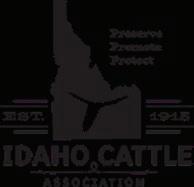
Iam humbled to have the opportunity to be working on behalf of the cattle industry at the Idaho Capitol. For the past 45 days, and for at least the next foreseeable 45, it will be busy on Jefferson Street in Boise. Before I get too far over my skis here talking politics, let me introduce myself a little bit for those of you who are wondering about the guy with a last name longer than a country mile and a first name that has a ‘t’ followed by an ‘x’ in it. To address the name portion first, my family comes from the Basque culture, and in that dialect the ‘t’ and the ‘x’ are able to get cozy next to one another providing something similar to the ‘ch’ sound. I grew up on a diversified row crop farm and commercial cattle ranch just south of Star where my family continues to operate business. I graduated from the University of Idaho and have been involved in legislative affairs for clients since the 2018 session. I am married to a teacher who has the patience to deal with me and our two year old daughter.
During the 2022 election cycle we saw nearly a 50% turnover in the legislature. A large driving factor was the redistricting and drawing of new legislative boundaries. The large turnover accounts for new faces to both bodies and people that may have transitioned from one body to the other. In referring to the body or a body in this article and any subsequent article, I am referring to the House of Representatives and Senate. All of the new legislators have come in with different backgrounds and have different ideas that motivate them. There have been several classes taught for the new legislators in preparation for the session, but there is something about being involved in the process that gives you the most insight. An abundance of new faces in both bodies, combined with new leadership in the House of Representatives and new Committee Chairs on both sides of the rotunda was likely the source of the slower than usual start to the session. However, five weeks in has us off and running with a primed legislative engine that is spitting out bills faster than any auctioneer can sell bulls at any seedstock
 BY PATXI LARROCEA- PHILLIPS
BY PATXI LARROCEA- PHILLIPS
sale I have sat ringside to. There are over 200 pieces of legislation printed and a healthy number on the way forward still as I write this in mid-February. In all of this slurry, it has been critical for ICA to be a resource and provide any education that is necessary for legislators that are seeking information regarding the cattle industry and our policies.
There are several things that simply must be completed when the legislature comes to town to conduct business. One of the spotlights is on the budget setting work that the Joint Finance and Appropriations Committee is tasked with. The word joint in the name provides great context in that there are both House and Senate members that sit on this committee. Historically, the committee voted together, and it only took a simple majority to pass a budget. However, new leadership this year has argued that House and Senate members should vote as separate bodies with both needing to sustain a simple majority to pass a budget bill. The final decision that was reached is a blend of how it was, and what was proposed. House and Senate Majority leadership have determined that the best plan is to utilize the joint voting procedure as completed in the past, but going forward the votes for both bodies will be announced separately. This means the budget bill only needs a simple majority to pass the committee, but if the bill did not pass one of the bodies, it will be sent to the body from which the majority members did not pass the bill and that body would decide on its course of action.
Currently, there have been several pieces of legislation that have been introduced and printed that would affect members of the ICA. S1063 that deals with barbed wire fences was introduced this past week. S1063 would update certain sections of code that deal with careless exposure of barbed wire fences. There have been several reports of individuals who have released cattle into grazing pastures without taking a gander at the fence. As a result, the cattle escape and if they are on or near a road, individuals have used the open range statute
During the 2022 election cycle we saw nearly a 50% turnover in the legislature.
as a shield to argue against simply fixing the fence. This was not the intended purpose of open range, and it should be our duty as stewards of those pastures to check the fence before unloading the cattle into the pasture.


Public lands have been in high demand since 2020. A majority of users understand and respect the lands, and the assets fixed to the land that could include a gate, water trough or corral. However, on the other side of the coin more bad actions have seen the light of day and have become burdensome on public staff. S1049 was introduced in early February and passed out of committee in mid-February heading for the Senate floor. S1049 gives the State Board of Land Commissioners’ agents the ability to cite and fine those misusing the endowment lands. The legislation states that the State Board of Land Commissioners must provide notice to the public of any restrictions, closures, prohibitions, and regulations on State endowment land. Proper posting is required, and fines and restitution requirements are outlined.
I continue to hear chatter from several members that the bodies are pushing for a March 24 adjournment. That gives us 40 days, of which a quarter of those are weekends, to complete this process. Efficiency will be key, and grit will be needed because there will be days when we will feel like we have been bucked off, but it will be essential to mount back up if we are going to stay in it for the long haul.
Acommitment to hard work, ingenuity, and perseverance are in the blood of ranchers across our state. It drives us. As a rancher myself, these same ideals shape my approach to advocating for the needs of every Idahoan in the U.S. Senate.
This session of Congress will undoubtedly pose challenges for those of us in the cattle industry, but there are also opportunities that should leave us hopeful. A few major projects I am focusing on this Congress include protecting local water rights, the reauthorization of the Farm Bill, and reining in federal government overreach. Between all of those issues and many others, Congress has substantial work to do on behalf of ranchers and Idahoans.
Defending local water and property rights is an issue I hold near and dear to my heart. Private water rights and states’ ability to regulate them has been recognized since the West was settled, and Idahoans have managed water longer than we’ve even been a state. Unfortunately, regardless of this substantial history of successful management, the federal government still attempts to intervene.
I am committed to protecting Idaho’s right to Idaho water and preventing burdensome federal overreach. With Senators Mike Crapo (R-Idaho) and John Barrasso (R-Wyo.), I reintroduced the Water Rights Protection Act. This important legislation will protect local wa-
ter laws by prohibiting the federal government from mandating water rights be transferred as a condition of any permit or use agreement.
This Congress, I am also continuing a fight that started during the Obama administration over water rights. I am firmly opposed to the Biden administration’s unfortunate – though unsurprising – decision to follow the Obama administration’s example in declaring its intent to regulate puddles and ditches as though they are lakes and rivers. We spent years untangling the red tape of the Obama-
BY JAMES RISCH U.S. Senator
This Congress is also an opportunity for cattlemen and women to engage with Congress on the Farm Bill—an updated authorization of USDA programs.
As ranchers, self-sufficiency is a priority and way of life, but any broad agricultural policy discussion could significantly alter our livelihoods, especially the Farm Bill, which is only reauthorized every 5 years.
Idahoans know land conservation and food production go hand in hand—in fact, they work best when working together. In agriculture, it is in our best interests to be good stewards of the land.
Grazing promotes prairie health and fire preparedness and has even been proven to improve habitat conditions for wildlife, like sage grouse.
Biden Waters of the United States (WOTUS) Rule, and now it appears we are once again in the same hot water.
I introduced a resolution with Senator Crapo and Shelley Moore Capito (RW. Va.) to overturn this egregious Biden WOTUS rule. While I hope our resolution succeeds, we are battling substantial headwinds from Senate Democrats.
The fight for your private property and water rights is still going strong, and I will continue to be an advocate for reasonable, common sense regulations that protect our way of life.
In agriculture and beyond, it is clear that those who actually work the land know how best to manage it. This sentiment is critical as we engage on the Farm Bill, and it is also essential to the work I do on the Energy and Natural Resources Committee.
The Energy Committee has oversight over both the Department of Interior and the United States Forest Service, which means this committee can safeguard or harm the public lands in Idaho. As a member of this committee, I am committed to ensuring that grazing remains a central part of our public land management. This means ensuring that working acres of federal land
In agriculture and beyond, it is clear that those who actually work the land know how best to manage it.
Focusing on Idaho’s water & energy as priorities.
remain in production and any other considerations—from species management to development—balance the benefits of grazing to the agricultural economy and good rangeland management. This balance is something I prioritize when considering nominees, questioning agency officials, or voting on legislation.
The Biden administration continues to create hurdles and obstacles that are difficult for ranchers and Idahoans alike, and I am pushing back hard on the administration’s federal overreach, burdensome regulations, and efforts to implement their green agenda. Farmers and ranchers bear the burden of these policies and have had to contend with higher input costs, decreased stability, unwieldly land management, and a loss of smaller family operations. Idahoans deserve less of this and more Western pragmatism.

I will continue to fight this coming year in Congress to bring more of Idaho’s diligence, resourcefulness, and responsibility to the lawmaking process. Ranching will always be part of Idaho’s culture, identity, and economy. With the partnership of ranchers like you, we can make progress in fighting bad policies and instituting better ones.

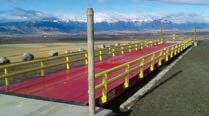
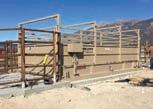

Established in 1959, Scales NW offers a wide range of equipment, from precision lab balances to high capacity rail scales, as well as certified scale service and installation.



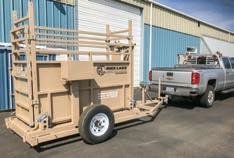
 BY BRENDA RICHARDS IRCP Coordinator
BY BRENDA RICHARDS IRCP Coordinator

At the 2023 Idaho Rangeland Conservation Partnership (IRCP) Annual meeting held in Nampa at the Idaho Fish and Game office this January 17th & 18th, we once again had over 125 attendees gathering to hear and share information and conversation around Idaho’s rangeland.

Each year the feedback we receive from meeting attendees is that they put a high value on the information shared among a great diversity of rangeland stakeholders and the cross-education and understanding this promotes.This year’s meeting centered around Collective Stewardship, bringing together discussions from previous year’s meetings, and focusing on the role diverse rangeland stakeholders play in the big picture of sustainable rangelands.
In the Oxford Dictionary collective is an adjective defined as “done by people acting as a group”. The Merriam-Webster Dictionary defines collective as “shared or assumed by all members of a group”. Stewardship is a noun, defined by the Oxford Dictionary as “the job of taking care of something”. Their example (much to my amazement!) for use in a sentence read “responsible stewardship of our public lands”. The Miriam Webster’s definition of stewardship reads “the careful and responsible management of something entrusted to one’s care” with a sample sentence “she believes that stewardship of the environment if everyone’s responsibility” -- again referencing land use. It appears our IRCP meeting around collective stewardship found the adjective we were looking for to help with a noun we can rally around.
When we discuss collective stewardship as ranchers and long-time stewards of the land, I believe we have an obligation to help guide the meaning of the phrase. When putting those two words together, collective stewardship, we can help form an idea around the term so other stakeholders of Idaho’s rangelands understand ranchers have always had a stewardship role with the land as part of their day to day lives. With that in mind, we can play a key role in bringing other stakeholders to the table to participate collectively in finding workable solutions to some of the specific challenges.
If you look into the history of the word “stewardship” you will find it was used in reference to the oversight of courts, unions, organizations, schools, etc. In today’s use of the word, we most often find it used with a positive reference towards carefully looking at and managing our natural resources. Idaho has a huge dependency on cattle and agriculture for its economic success, along with the economic success of most of our rural communities. Ranchers and landowners are at a critical point to help assure understanding of the everyday conservation and stewardship they have provided all along. Often, we have not given much thought to sharing the story about what we do every day in our capacity as stewards. It has just always been a part of our lives, our business decisions, and our daily activities. Our success requires that we make sure to take care of the land, the water, the wildlife, the communities, the livestock, and all the other pieces that make it all work. Healthy and productive landscapes must include healthy and productive communities and working ranches to maintain the open space, habitat, and unfragmented landscapes we depend on. Other interests depend on us for the continuity of that open space, healthy habitat,
and unfragmented landscape for their interests, too, whether it be aesthetic, wildlife habitat, recreation, hunting or fishing, or just to get out of the urban areas and to be in that wide-open space.
In the IRCP meeting breakout sessions, each group was asked to identify three thoughts or ways collective stewardship can be successful. Almost every group identified “site specific” and “locally led” as key components for successful collective stewardship. Identifying these key components, it becomes apparent collective stewardship cannot be successful if local knowledge and expertise and experience is not part of the equation. Local people know the local needs and what is workable.
As ranchers, we understand what is at stake and know that among challenges come opportunities, too. IRCP and the partners and stakeholders continue to gather at these meetings to share perspectives and help cross educate. It is critical for those of us depending on these areas to be economically, socially, and ecologically sound to help define the need for collective stewardship and help define what that means to our areas. The definitions referenced for stewardship don’t say “let’s change management” or “let’s restrict management” the definition is “careful and responsible management of something entrusted to one’s care”. Those who rely on healthy land to assure business success live this every day. Collective’s definition of “acting as a group” is the adjective that allows us to bring other stakeholders in to understand the stewardship that has been going on with our producers and landowners for years, and then finding ways to help partner to keep these open spaces, ecologically healthy uses, and rural communities thriving. Acting as a group and working together for the good of the whole and working together to cross-educate stakeholders.
I recently read the news release from the National Cattlemen’s Beef Association praising their seven regional winners of the NCBA Environmental Stewardship Awards. Many great things were written about each of these ranches, but one thing continued to jump out at me more than anything else – these are generations of land stewards –often sixth, seventh, or eighth generation. Ranchers that have been doing site specific versions of conservation for years and years because it is part of what ranchers do every day with their business! We are just finally getting bet -
ter at telling that story and allowing others (collective) to assist in that stewardship where it fits.
Many years ago, a definition for “wilderness” was established. Today, when the word “wilderness” is used, we all have a basic understanding of what characterizes wilderness, and what the definition of a wilderness is.It brings to mind non-motorized use, inclusion of livestock grazing, and allowing uses that do not interrupt the wilderness characteristics.
As we continue to address some of these challenges on our rangeland and in our rural communities, we need to help design a definition of collective stewardship that can be universally understood like the wilderness definition. A definition that helps encompass the importance of livestock grazing and multiple use. A definition that helps encompass understanding and empathy towards those who are daily stewards of the land within their business as cattle producers, along with empathy for those who may not be in our industry but have a true appreciation for healthy and sustainable rangeland and the livelihoods that depend on it. As ranchers and generational stewards of the land, it will be up to us to share our stories and knowledge. This means our successes and some of those lessons that were maybe not so successful, for we cannot learn or grow if we don’t acknowledge both.
Many times, what draws others to a specific area is the fact that the people who have been working and living there have been successfully stewarding those lands for generations. Collective stewardship is not always looking to change or restrict, but often just figuring out how to collectively work together to keep things working well and the rangeland sustainable in all three categories -- economically, socially, and ecologically. As this conversation moves forward, it will be critical for us to share that involvement and input of the local ranchers and landowners, those who are site-specific.
By sharing our knowledge and time with those who truly wish to be a part of collective stewardship, we can help with local, customized, workable solutions, and we will be able to address some of the stress points Idaho rangelands and livestock grazing are facing today. By being part of collective stewardship, we can help make sure the definition and idea that comes to mind starts with the local stewardship that is in place and the ability to build on that.


Crude
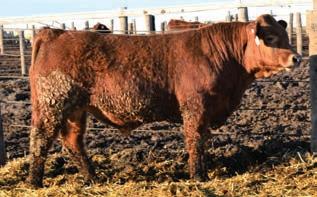



•Maintains
•Supports
Forage

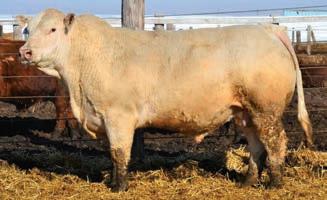


Give
Learn

$425,000 $425,000
in support of:
CATTLE ACTION LEGAL FUND



POLITICAL ACTION COMMITTEE


BEEF COUNTS
FIRE DISASTER RELIEF and for the reinforcement of the Idaho cattle industry.
Are You ready? Are You ready?


 BY DAN MCCARTY Director, Industry & Affiliate Outreach National Cattlemen’s Beef Association
BY DAN MCCARTY Director, Industry & Affiliate Outreach National Cattlemen’s Beef Association


As the nation’s largest and oldest association representing cattle and beef producers, NCBA has a proud heritage that goes back to 1898. A grassroots organization, your membership in NCBA gives you the opportunity to shape the future of the industry by actively participating in the policy development process. Individual members introduce policy, and all members have the opportunity to vote on all association policy.
As a member of NCBA, you have a fulltime staff in Washington, D.C. working every day on issues ranging from animal health to international trade and private property rights to federal land issues. The NCBA Washington, D.C. staff not only works the halls of Congress but with regulatory agencies throughout the administration to ensure cattle producers are represented in any discussions that could impact their business. NCBA takes its role as the voice of the cattle industry on Capitol Hill seriously and is highly respected throughout Washington, D.C.
Members can stay on top of industry news with the member-only monthly National Cattlemen newspaper and the twice per year Directions magazine…however, your membership can actually save you money on products and equipment you use around the ranch on a regular basis.
In addition to a discounted registration to the Cattle Industry Annual Convention & NCBA Trade Show, NCBA members have access to several member benefit programs, thanks to our many great corporate partners.
As an industry partner with NCBA, Elanco is thrilled to welcome you with an exclusive offer to new members. All new members to NCBA can log into the member benefits portal to claim a free 1-liter bottle of Cydectin (moxidectin) Pour-On, the #1 dewormer in the industry.
Dell Technologies offers NCBA member discounts on all Dell desktops, notebooks, servers, electronics and accessories. Members also have access to a dedicated small business tech advisor, a dedicated NCBA website to Dell Financial Services, and complimentary onsite consultations through the Partner Outreach Program.
NCBA members also receive 15% off gift cards from Bass Pro Shops/ Cabela’s. Gift cards can be used for shopping at all Bass Pro Shops and Cabela’s locations, the Bass Pro Shops and Cabela’s Catalog and on BassProShops.com and Cabelas.com.
Caterpillar offers NCBA members up to 32% off on select machines, a dedicated Caterpillar National Account Manager, access to a full line of quality and reliable Caterpillar products, and a strong working relationship with your local Cat dealer to select equipment to meet your specific needs.

New Holland values cattlemen and women that help preserve the industry with their membership in NCBA and are proud to partner with the organization to provide exclusive offers on their line of tractors, haytools, skid steer loaders and much more.
Through an exclusive partnership with Roper & Tin Haul, NCBA members receive significant discounts on apparel and footwear. NCBA members receive quarterly 25% off coupons in
their National Cattlemen newspaper and all new members receive a 50% of coupon. 50% coupons are also earned by recruiting new NCBA members. Coupons are redeemable online at eroper.com and tinhaul.com.
John Deere offers special discounts on riding lawn equipment, compact utility tractors and hay equipment with over 500 discounted models to choose from. Registration for the John Deere GreenFleet Rewards program allows you to purchase online or from your local John Deere dealer.

More information about all membership benefit programs, policy priorities, and a link to join can be found at ncba.org.

126.22 +/‐ACRES–Canyon Rim Development Twin Falls‐ $5,500,000
892.86 +/‐ ACRES – Farm/Ca�le Opera�on Weiser‐ $1,427,000

3.91 +/‐ Acres‐Industrial Grain Mill – With Railroad Twin Falls‐ $1,650,000
86.16 +/‐ Acres– 1022 CAFO/Feedlot


Buhl‐ $2,550,000 *NEW LISTING*
2.38 +/‐ Acres– Mul� Use Agriculture Facility Kimberly‐ $2,500,000 *NEW LISTING*

Member Member Member Recruitment Recruitment Recruitment
5 MEMBERS 5 MEMBERS RECRUITED RECRUITED = =
1 CONVENTION 1 CONVENTION REGISTRATION! REGISTRATION!
To be eligible :
-Membership forms must be received by the office between Jan 1 - Oct 31
-Must have your name listed in the recruitment space,
-Recruitment must be a new member or outdated 2+ years

• Gain in-depth information on the Idaho cattle industry and valuable tools to be successful in the cattle business.
• Open to cattle producers between the age of 18 and 40.
• Highlights include a tour of the cattle industry, meat cutting demonstration, updates on current issues facing the cattle industry, information on financing a cattle operation, how to utilize risk management tools, innovative range management practices, and endangered species issues.
To apply:
• Complete application at www.uidaho.edu/YCC by May 1
• 20 participants will be selected to attend
• Attendance for selected participants is free
Questions? Contact:
Meranda Small, UI Extension | 208-983-2667 or msmall@uidaho.edu
Or contact your local UI Extension office’s livestock educator


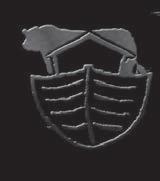




7 Box Ranch
AGPROfessionals
Agri Beef Co. Robert
Rebholtz, Jr.
Agri Beef Co./Boise Valley Feeders
American Hereford Association
Angela Lierman
Autumn Gilbert
Bank of Commerce
Bar 46
Bar T Bar Ranches
Black Livestock, LLC
Blind Canyon
Aquaranch Inc.
Brackett Ranches LP

Braelyn Scott
Canyon Cattle Inc
Caribou Cattlemen’s Association
CHR-Hansen
Chrissy Payne
Clark County Stockgrowers
CompanyName
Conquest Insurance
Craig Mello
Dave Harris
Ed Olson
Farmers Bank
Five Rivers Cattle
Feeding - Interstate Feeders
Five Rivers Cattle
Feeding Co
Five Rivers Cattle Feeding Company
Flying A Ranch Inc.
Foundation for Wildlife Management
Groom Ranches
Guerry Inc.
Guthrie Newell
H and a Half Ranch
Hagenbarth Livestock
Hannah Doumit
Harris CPA’s
Idaho Land & Appraisal
Intermountain Beef Producers
Ireland Ranch LLC
Jacquelyn Moreno
Jake & Jennifer Zollinger
Jany Rae Seda
Jay Theiler
Jayne Davis
Jim & Sue Smith
Johnson Research
Jordan Sparrowk
Joseph Doumit
Josh Whitman
Justin & Jodie Mink
JW Wood
Katherine Doumit
Kenny & Teresa Kershner
Kim Stuart
Leah Scholz
Lindsay - Yantis Ranch
Little Valley Land
Liz Moore
Logan Peters
Matt Buyers
Matthew & Stacey
Doumit
McIntire Farms
Nowerk Ranch
Nutra-Lix, Inc.
Oft Angus Ranch
Performix Nutrition Company
Q Dub Ranch
Ritchie Industries
Robert Johnson
Livestock
Rocking S
Romans Ranches
Charolais
Russell (Tony) & Pam Pantone
Rymo Cattle Co.
Scott & Sherri Nicholson
Stepping Stone Ranch
Stonebraker McQuary Insurance
Ted & Sandy Cantrell
Terry Reynolds
Tim Brady
Volk Ranches
Wade Small Weiser River Soil
Conservation
William & Anne Schroeder
Williams Farm & Ranch
LLC
Wilson & Wilson Co.
Northwest Regional Manager
Cell: 509.948.6430
Office: 800.989.8247
Email: kodydeewilliams@allflexusa.com
P.O. Box 612266 • 2805 East 14th Street Dallas/Ft. Worth Airport, Texas 75261-2266

Dennis Boehlke
AMERICA’S LIVESTOCK MARKETING LEADERWORKING FOR YOU.
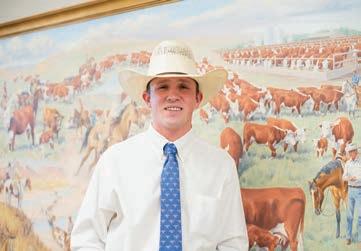
VISIT OUR NEW BOISE LOCATION!

2700 Airport Way, Boise, ID, 83705 855-868-6842
info@superiorlivestock.com
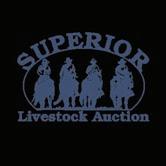
Tuesday,March14,2023
Lunchat11:30•1:00MSTpm•AtRanchinAshton,Idaho 120YearlingRedAngusBullsand85YearlingHeifers

www.loosliredangus.com
BrianLoosli 3127E.1100N. Ashton,ID83420 208-652-3303 208-317-7878 blloosli@gmail.com
JonathanMeek 208-227-3779

MarkLoosli 208-351-3333
9351 Lake Shore Drive
Dennis: Nampa ID 83686 (208) 989-1612
2 miles west of Hwy. 45
PRIVATE TREATY SALES HEREFORD & RED ANGUS
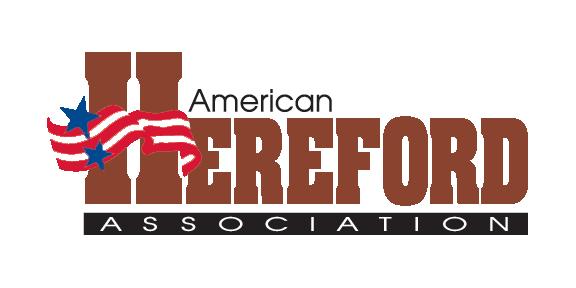


2 Year Olds & Spring Yearling Bulls Spring Yearling Hereford & Red Baldy Heifers
Check out our offering at jbbalherefords.com

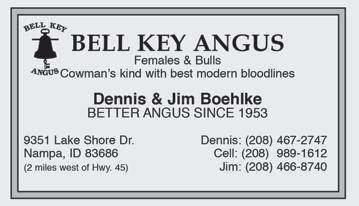
JBB/AL HEREFORDS 1973 S 1500 E GOODING, ID 83330 jbbalherefords@gmail.com
Bryan & Charly Anderson 208-280-1964 Jae Anderson
“

